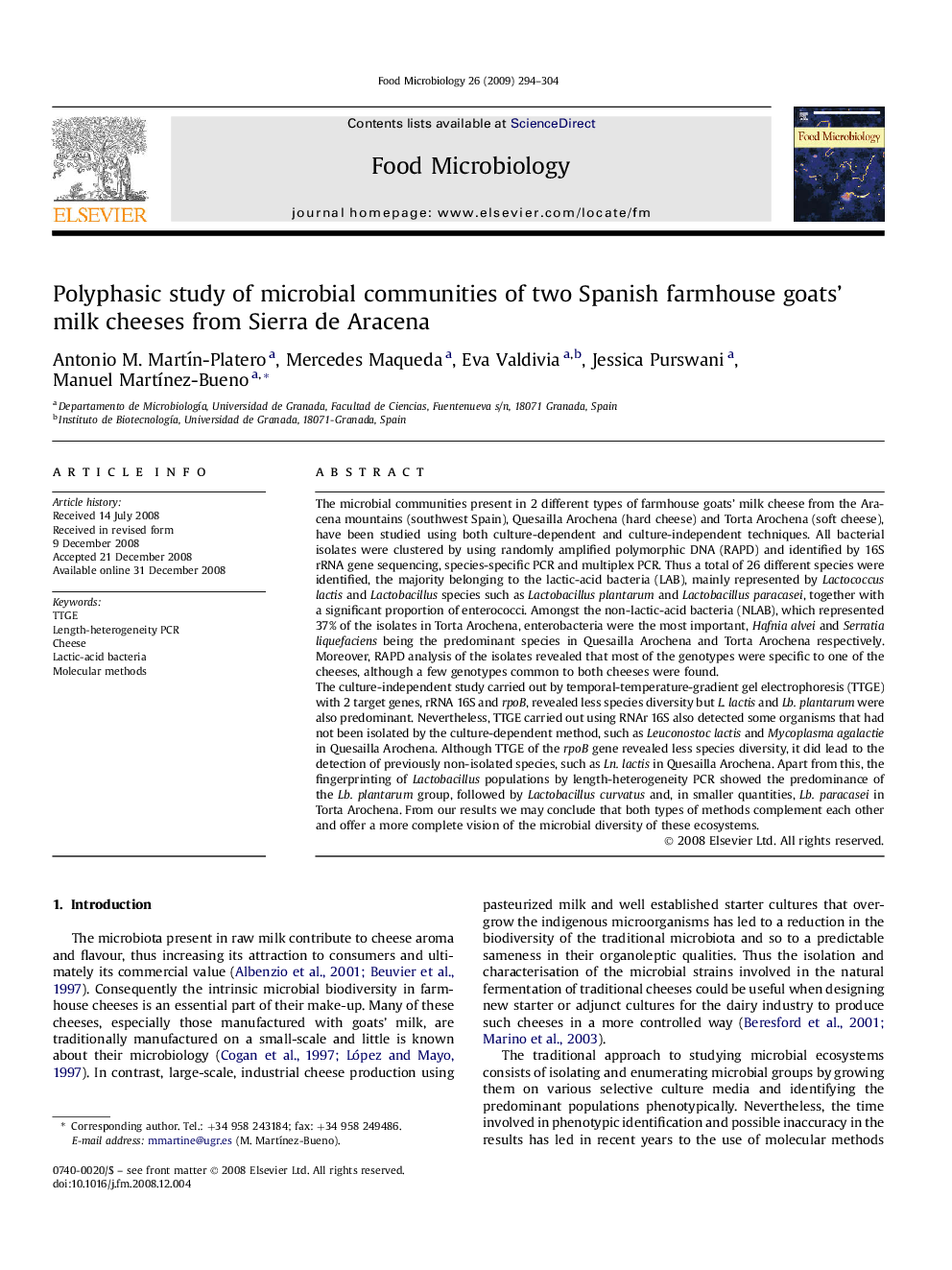| کد مقاله | کد نشریه | سال انتشار | مقاله انگلیسی | نسخه تمام متن |
|---|---|---|---|---|
| 4363524 | 1301560 | 2009 | 11 صفحه PDF | دانلود رایگان |

The microbial communities present in 2 different types of farmhouse goats' milk cheese from the Aracena mountains (southwest Spain), Quesailla Arochena (hard cheese) and Torta Arochena (soft cheese), have been studied using both culture-dependent and culture-independent techniques. All bacterial isolates were clustered by using randomly amplified polymorphic DNA (RAPD) and identified by 16S rRNA gene sequencing, species-specific PCR and multiplex PCR. Thus a total of 26 different species were identified, the majority belonging to the lactic-acid bacteria (LAB), mainly represented by Lactococcus lactis and Lactobacillus species such as Lactobacillus plantarum and Lactobacillus paracasei, together with a significant proportion of enterococci. Amongst the non-lactic-acid bacteria (NLAB), which represented 37% of the isolates in Torta Arochena, enterobacteria were the most important, Hafnia alvei and Serratia liquefaciens being the predominant species in Quesailla Arochena and Torta Arochena respectively. Moreover, RAPD analysis of the isolates revealed that most of the genotypes were specific to one of the cheeses, although a few genotypes common to both cheeses were found.The culture-independent study carried out by temporal-temperature-gradient gel electrophoresis (TTGE) with 2 target genes, rRNA 16S and rpoB, revealed less species diversity but L. lactis and Lb. plantarum were also predominant. Nevertheless, TTGE carried out using RNAr 16S also detected some organisms that had not been isolated by the culture-dependent method, such as Leuconostoc lactis and Mycoplasma agalactie in Quesailla Arochena. Although TTGE of the rpoB gene revealed less species diversity, it did lead to the detection of previously non-isolated species, such as Ln. lactis in Quesailla Arochena. Apart from this, the fingerprinting of Lactobacillus populations by length-heterogeneity PCR showed the predominance of the Lb. plantarum group, followed by Lactobacillus curvatus and, in smaller quantities, Lb. paracasei in Torta Arochena. From our results we may conclude that both types of methods complement each other and offer a more complete vision of the microbial diversity of these ecosystems.
Journal: Food Microbiology - Volume 26, Issue 3, May 2009, Pages 294–304